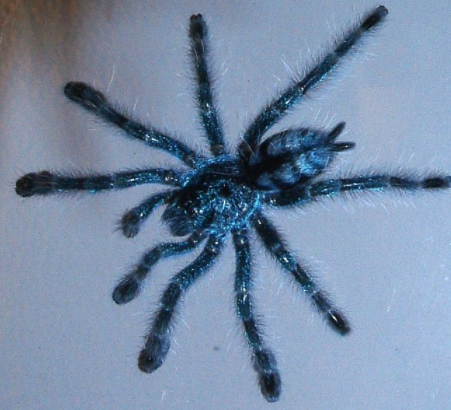Insect enthusiasts
March 28, 2017
Most people don’t like insects, spiders, or really anything that is hairy and has too many legs for its own good. Many people would likely scream and try to squash any such creature that dared to cross one’s path or enter one’s home. Therefore, it’s only natural that a subculture devoted to keeping and tending to large, exotic, and oftentimes intimidating insects and arachnids would be pushed to the side. However, beneath the initial disgust that accompanies these colorful and oftentimes predatory animals is an appreciation both for the fascinating creatures themselves and the complicated rituals and knowledge required to owning such alien organisms.
It turns out that caring for animals that molt, make webs and give birth to thousands of babies at a time can be quite difficult. Most owners of exotic insects or spiders are intimately aware of the biology of the creatures in their care, as such delicate and unique animals have needs the average pet owner would never think of having to serve. (For example, lamps and controlled temperatures are a must for tropical species, and when “molting” the specimen must be left in peace for very long stretches of time.) And just as certain breeds of dogs and cats are favored over others, insects and arachnids have their own more popular species: the Mexican Red-Kneed tarantula and similar such species are renowned for their long lifespans and captive breeding programs, though one must be careful not to get pricked by its toxic hairs. Giant centipedes, usually from Asia or South America, are even rarer pets, described as “pathologically unsociable” by enthusiast Frank Indiviglio. As for the actual six-legged “true” insects, hissing cockroaches seem somewhat popular among this subculture. These exotic animals from the island of Madagascar have their enclosures usually coated with a few inches of petroleum jelly, so that they can’t crawl out and wreak havoc on one’s property and sanity. And yes, they audibly hiss. Whip Scorpions are another curious invertebrate kept by a few intrepid owners; these ancient, subterranean arachnids have legs like a spider and little claws like a lobster, and they can spit a very weak acid. Why anyone would want to keep such an unsettling creature is beyond me, but different strokes for different folks, I suppose. Having cared for a tarantula in my middle school science class, I can say that I don’t understand the appeal for large insects. The class tarantula was creepy; I had to make sure it didn’t overeat; it was occasionally “moody” and it sat for long periods of time without moving at all. I suppose these attributes, along with their unorthodox number of legs explains why these pets aren’t really part of the mainstream, however. At least there’s someone to appreciate them.


















